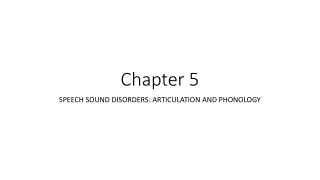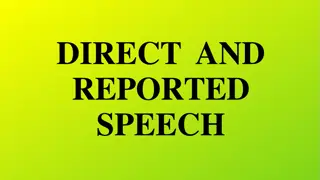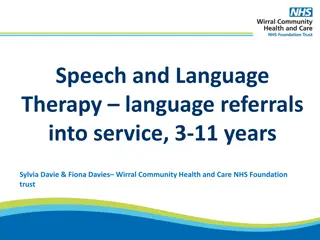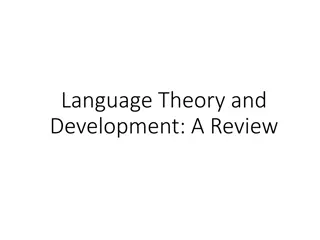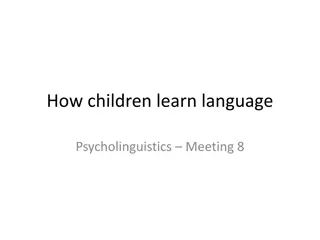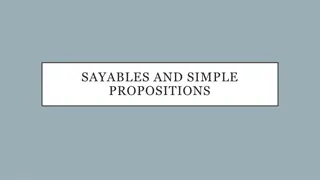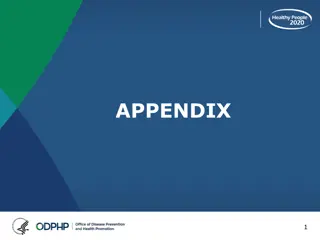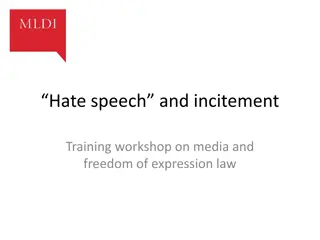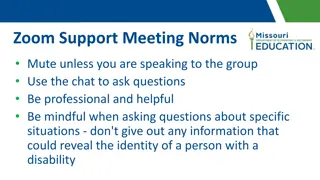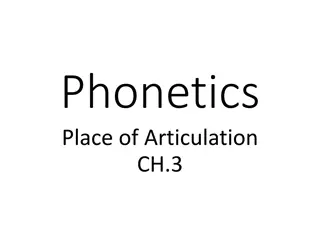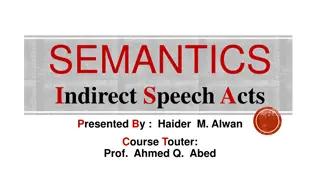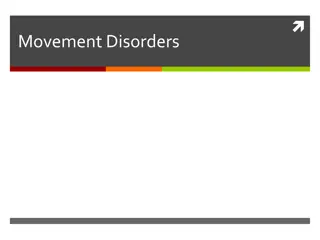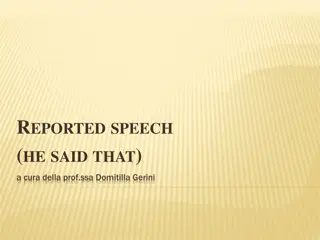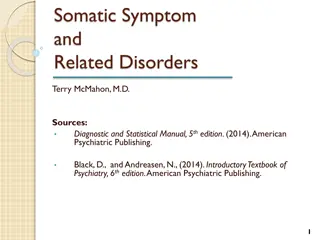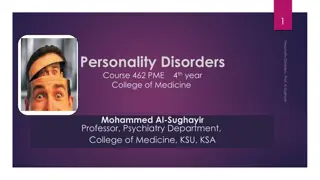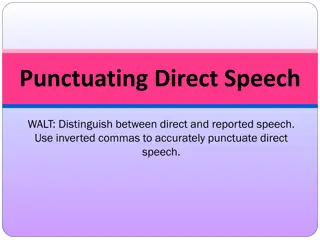Understanding Speech and Language Disorders
Speech and language disorders can impact an individual's communication abilities, affecting speech production, understanding, reading, and writing. These disorders may arise from conditions like brain developmental issues, strokes, traumatic brain injuries, or tumors. Treatment can offer significant benefits to those affected. This reference covers speech and language disorders, including types, causes, and treatments.
Download Presentation

Please find below an Image/Link to download the presentation.
The content on the website is provided AS IS for your information and personal use only. It may not be sold, licensed, or shared on other websites without obtaining consent from the author. Download presentation by click this link. If you encounter any issues during the download, it is possible that the publisher has removed the file from their server.
E N D
Presentation Transcript
INTRODUCTION TO SPEECH AND LANGUAGE DISORDER
CONTENTS Introduction. Speech Disorder. Types of Speech Disorder. Voice Disorder. Articulation Disorder. Fluency Disorder. Causes of Speech Disorder. Treatments for Speech Disorder. Language Disorder. Causes of Language Disorder. Treatments for Language Disorder. Conclusion. References
INTRODUCTION Speech and language disorders can affect a person s ability to talk, understand, read and write. Children may develop speech and language disorder is due to conditions that affect brain development before, or after birth. Adults may develops speech or language disorders due to strokes, traumatic brain injury or brain tumors. Many people with these disorders can benefits from treatment. This reference summary discusses about speech and language disorders.
SPEECH DISORDER Speech disorders or speech impediments are a type of communication disorder in which the person is unable to produce speech sounds correctly or fluently or have problem with his or he voice. There are three different levels of classification when determining the magnitude and type of a speech disorder Phonemic Tongue Depressor Cannot produce the sound voluntarily Both children and adults can have speech disease due some medical problem.
TYPES OF SPEECH DISORDER Voice Disorder Articulation Disorder Fluency Disorder other than this disorder, Apraxia of speech Muteness
VOICE DISORDERS A communication disorder is an impairment in the ability to receive, send, process and comprehend concept or verbal, nonverbal symbol system. People s voices are perceived as pitch, loudness and quality. Vocal quality is related not only to the production of speech, but also to the non linguistic aspects of speech.
ARTICULATION DISORDER An articulation disorder is a speech sound disorder in which a child has difficulty making certain sounds correctly. Phonology refers to study of the rules for using the sounds of language. In this disorder the individual may make one or more of several types of error in producing words. Words sound can be omitted, substituted, distorted or added.
FLUENCY DISORDER A person with fluency disorder has trouble speaking in a fluid or flowing way. They may repeat the words. Sudden impulsive burst. They may experience a short attention span, poor concentration, poorly organized thinking, inability to listen, speech is unintelligible. It can be identified by atleast age five.
CAUSES OF SPEECH DISORDER Most of the cases cause are unknown. Hearing Loss. Neurological Disorder. Brain Injury. Intellectual Disability. Drug Abuse. Physical Impairment.
TREATMENTS FOR SPEECH DISORDER Speech Therapy Psychotherapy Special Education Programs
LANGUAGE DISORDER When a person has trouble understanding others, or sharing thoughts, ideas, and feelings completely. Problems that may experienced can involve grammar, semantics, or other aspects of language. Vocabulary is limited. Use of short simple sentences rather than longer more complex sentences. Difficulties in listening.
CAUSES OF LANGUAGE DISORDER Family history. Premature birth. Low birth-weight. Hearing loss. Autism. Intellectual disabilities. Syndromes like Down syndrome. Fetal alcohol spectrum disorder.
TREATMENTS FOR LANGUAGE DISORDER Speech Therapy. Occupation Therapy. Individual Therapy. Group Therapy. Physical Therapy.
CONCLUSION Speech and language disorders can affect a persons ability to talk, understand, read and write. The symptoms of speech and language disorders will depend on the types of impairment. These disorder can cause symptoms related to fluency, articulation, voice, and language. Children may develop speech or language disorders due to conditions that affect brain development before, during, or after birth. Adults may develop speech or language disorders due to stroke, traumatic brain injury or brain tumor.
REFERENCES Hallahan,D.P & Kauffman,T.M.,1988.Exceptional children. Prentice Hall, Englewood Cliff, New Jersey. https://in.pintrest.com. https://en.m.Wikipedia.org. www.medicinenet.com. https://www.additudemag.com. http://www.healthyplace.com. www.healthline.com. https://en.m.Wikipedia.org.



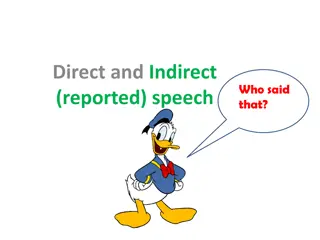


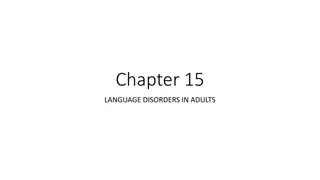







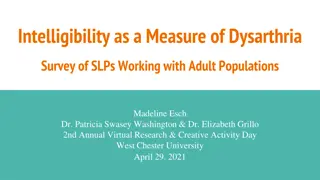
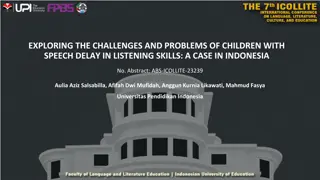
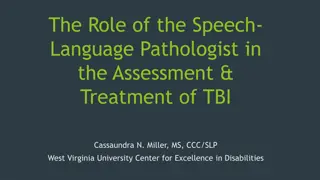
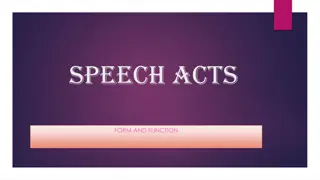
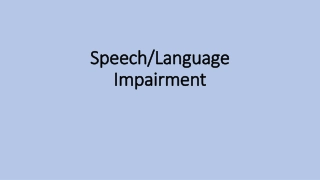
![Prevention and Combating of Hate Crimes and Hate Speech Bill [B.9B.2018]](/thumb/60513/prevention-and-combating-of-hate-crimes-and-hate-speech-bill-b-9b-2018.jpg)



